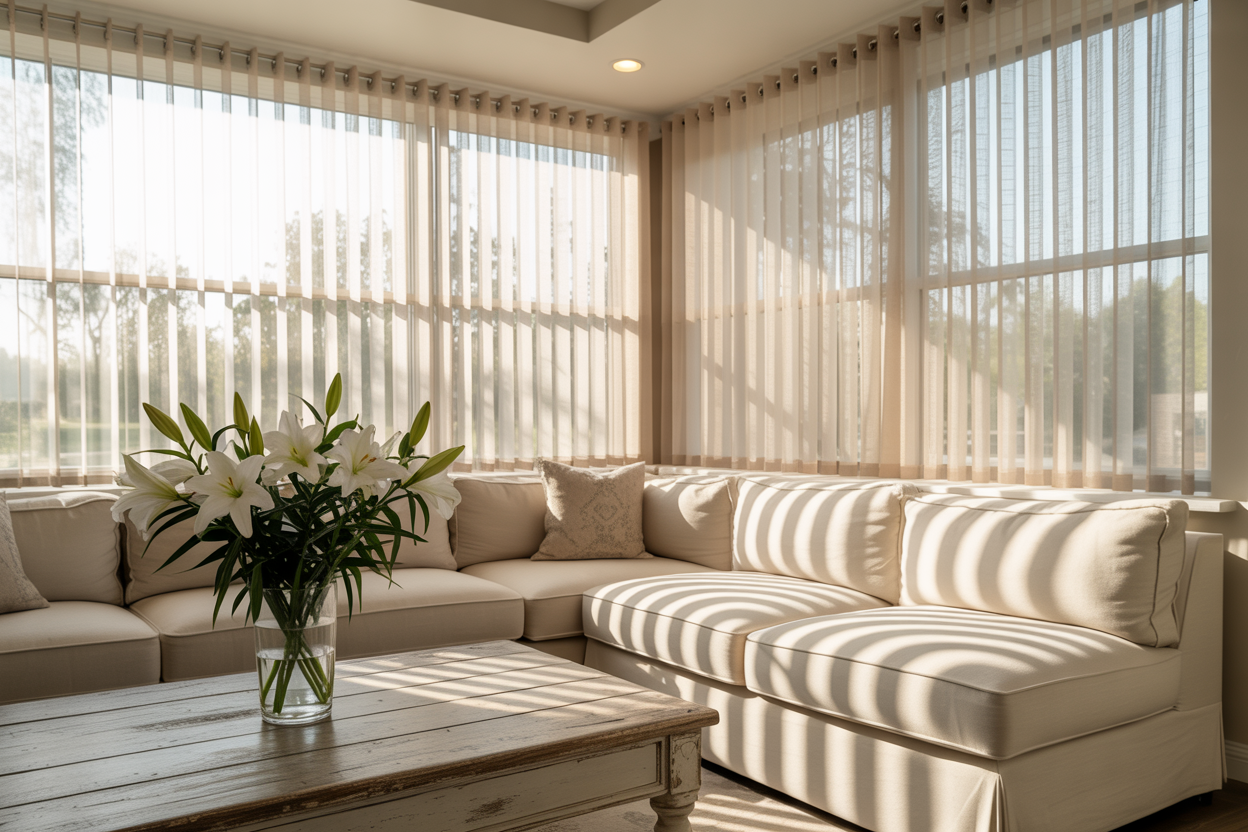
Window treatments can make or break a room’s entire aesthetic, yet many homeowners unknowingly choose styles that instantly date their spaces. When potential buyers walk through your home, outdated window coverings send immediate signals about maintenance, style awareness, and overall care of the property.
The wrong window treatments can turn interested buyers into polite-but-departing visitors before they even notice your beautiful hardwood floors or updated kitchen. From those tragic metal vertical blinds that rattle with every breeze to overly ornate lace curtains that belong in your grandmother’s sitting room, certain window treatment choices have overstayed their welcome in modern home design. Understanding which styles to avoid—and why they’re problematic—can save you from costly decorating mistakes that diminish your home’s appeal and market value.
Please note the imagery in this article, in an effort to provide highly specific examples, was created with the assistance of AI.
16. Over-tasselled ties on curtains that trip you up
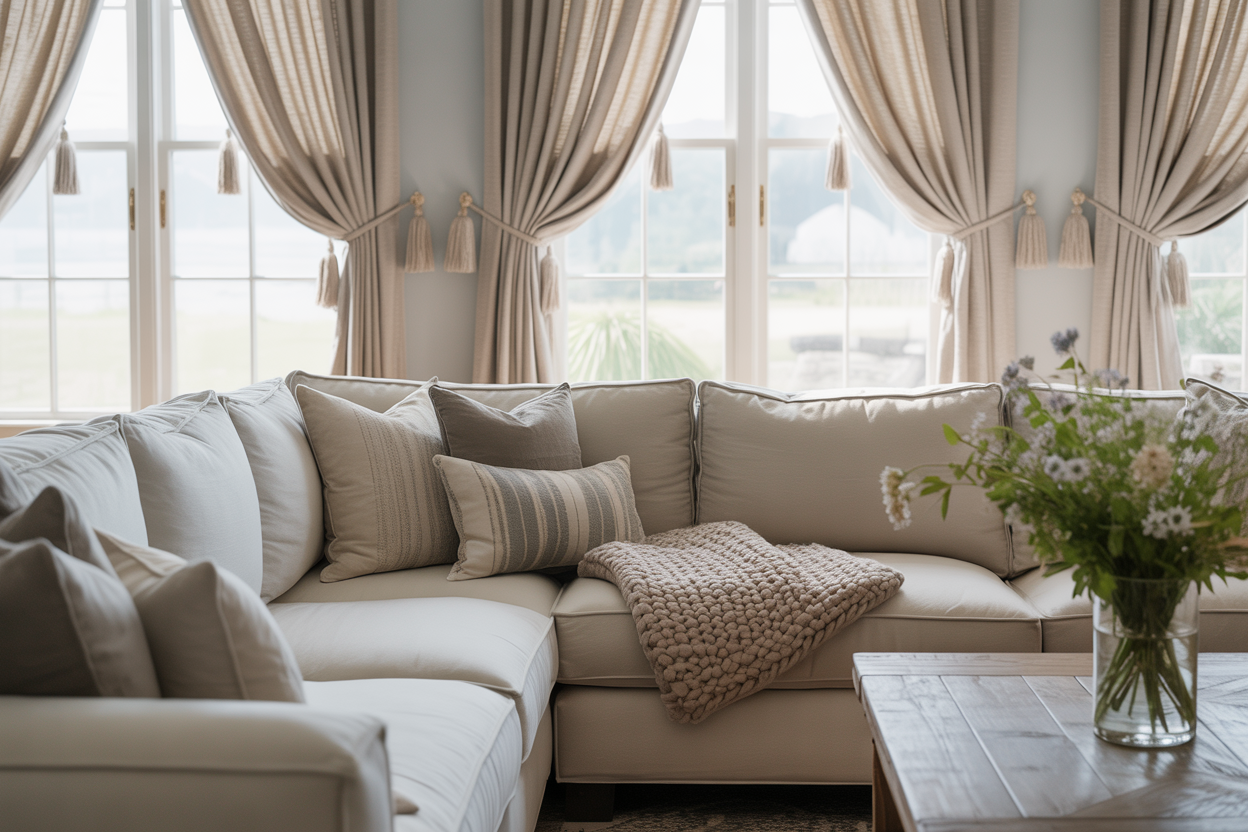
Your grandmother’s elaborate curtain tiebacks with massive tassels might have looked regal in 1985, but they’re now a safety hazard masquerading as decor. These oversized accessories dangle at shin level, creating an obstacle course in your own home.
Modern curtain tiebacks should be functional, not theatrical. Today’s buyers want clean lines and practical solutions that don’t require dodging fabric artillery every time they walk past a window.
Those heavy rope tiebacks with dinner-plate-sized tassels collect dust like magnets. They also overpower your windows, making rooms feel cluttered and dated.
Simple fabric ties or sleek metal holdbacks serve the same purpose without the drama. Your curtains can still look elegant without requiring hazard pay for houseguests.
If you’re attached to your tassels, scale down significantly. Choose versions that sit closer to the wall and won’t clothesline unsuspecting visitors. Your insurance company will thank you.
15. Rod pocket curtains stretching the budget on style
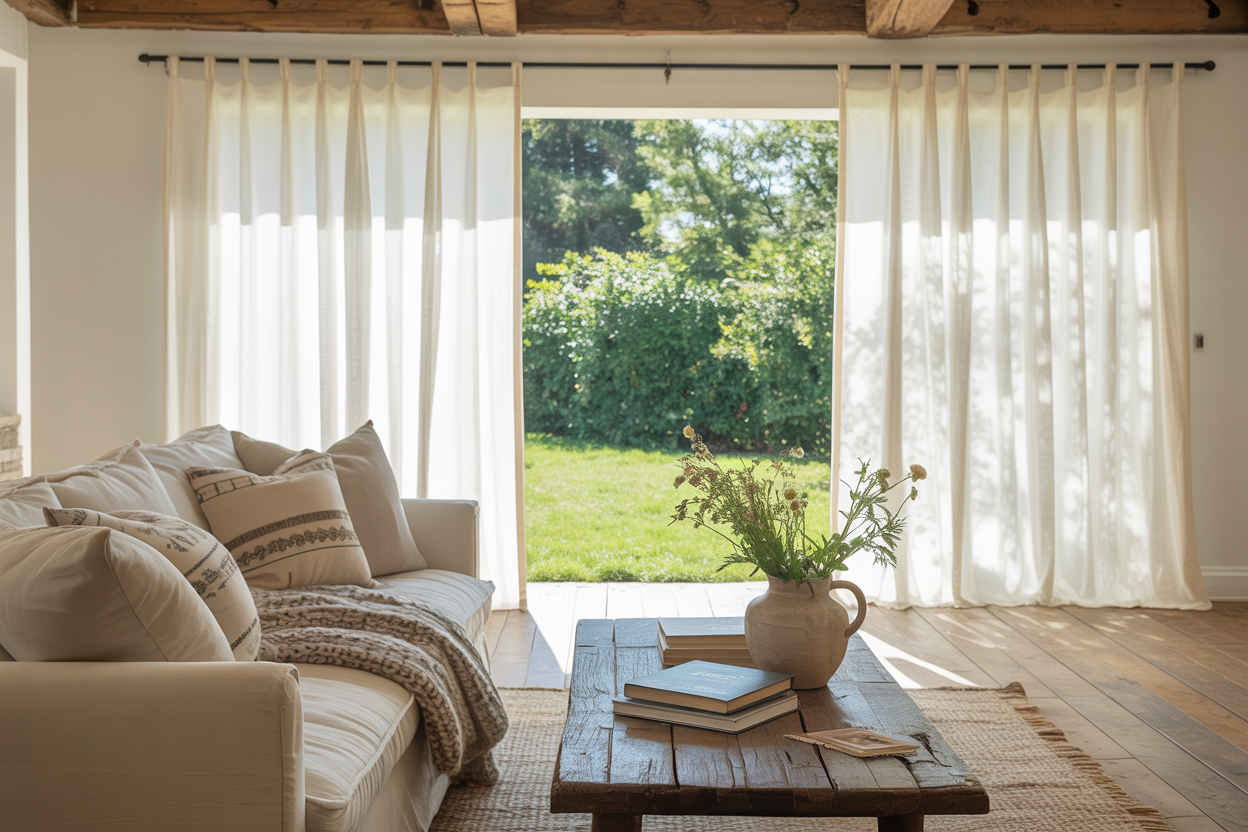
Rod pocket curtains might seem like a budget-friendly choice, but they’re actually stretching your decorating dollars thin when it comes to style impact. You’re getting basic functionality without the visual punch that modern buyers expect.
The simple fabric channel design looks dated compared to contemporary hanging methods. Your windows end up with that gathered, bunched appearance that screams “rental property” rather than “thoughtfully designed home.”
While rod pocket curtains remain popular for their affordability, they lack the crisp, tailored lines that today’s buyers associate with quality window treatments. You’re essentially paying for fabric that hangs limply instead of making a statement.
Modern alternatives like grommet panels or tab-top designs offer better value for your decorating investment. These styles give you more visual interest and perceived quality without breaking the bank.
The casual, relaxed vibe of rod pockets worked in past decades, but today’s buyers want window treatments that look intentional and polished. Your rod pocket curtains are sending the message that you’ve settled for “good enough” rather than pursuing design excellence.
Consider upgrading to hardware that allows curtains to hang properly and create the clean lines buyers expect in contemporary homes.
14. Mismatched curtain rods that scream indecision

Nothing says “I gave up halfway through decorating” quite like mismatched curtain rods throughout your home. You might think nobody notices, but trust me, potential buyers do.
Outdated or mismatched curtain rods can undermine even the most beautiful drapery. Your gorgeous silk panels lose their impact when hung on that random collection of brass, chrome, and wood rods you’ve accumulated over the years.
Walking through a home with different rod styles in every room creates visual chaos. One room sports sleek modern black rods while the next features ornate brass with decorative finials.
The inconsistency suggests you either lack design vision or couldn’t commit to a cohesive style. Buyers wonder what other shortcuts you’ve taken throughout the house.
Modern window treatments focus on sleek, stylish hardware that enhances rather than distracts. Choose one finish and stick with it throughout your main living areas.
Your curtain rods should fade into the background, not compete for attention with each other.
13. Polyester sheer panels that hang limply and lifeless

Your windows deserve better than sad, droopy polyester panels that look like they’ve given up on life. These budget-friendly curtains might seem like a steal, but they’re actually stealing your home’s appeal.
Polyester sheers lack the natural drape and movement that buyers expect from quality window treatments. They hang flat against the window like deflated balloons at a forgotten party.
The synthetic material creates an obviously cheap appearance that screams “rental property” rather than “dream home.” Potential buyers notice these details more than you think.
While sheer fabrics are trending for their airy, light-filtering qualities, the material quality matters enormously. Cheap polyester versions fail to achieve the elegant, flowing look that makes sheers attractive.
Your limp panels also collect dust and static, creating an unkempt appearance that turns buyers away. They photograph poorly during listing photos, making rooms look neglected.
Consider upgrading to higher-quality fabrics like linen or cotton blends that actually move with air currents. Your windows will thank you, and so will your home’s resale value.
12. Tone-on-tone, beige-on-beige roller shades—yawn

Your beige-on-beige roller shades might feel safe, but they’re putting potential buyers to sleep. This monochromatic approach screams “I gave up on decorating” louder than you think.
While beige roller shades can provide neutral sophistication, the tone-on-tone trend has officially flatlined. You’re essentially creating a visual void where your windows should add interest.
The problem isn’t beige itself—it’s the complete lack of contrast or texture. When your walls, trim, and window treatments all blend into one beige blur, you’ve created the design equivalent of watching paint dry.
Today’s buyers want windows that feel intentional and dynamic. They’re looking for treatments that complement the space without disappearing entirely.
Consider adding contrast with white or dark trim, or swap those bland roller shades for something with texture or subtle pattern. Even staying within neutral territory, you can create visual interest that doesn’t make buyers wonder if you forgot to finish decorating.
Your windows are architectural features, not afterthoughts. Give them the attention they deserve.
11. Plastic or vinyl window films that look cheap

Your windows deserve better than those flimsy plastic films that scream “rental property.” These transparent adhesive sheets might promise privacy, but they deliver disappointment instead.
Low-quality window films bubble, peel, and yellow over time. They create an instantly dated look that buyers notice immediately. The thin material often appears cloudy or distorted, making your home look neglected.
The five types of window films include privacy, decorative, and insulating options, but cheap versions fail to deliver on their promises. Poor installation leaves air pockets and wrinkles that can’t be smoothed out.
These films collect dust and fingerprints easily. Cleaning them often makes the problem worse, causing scratches and more cloudiness. The adhesive eventually fails, leaving sticky residue on your glass.
Window films are available in a wide range of varieties, but buyers can spot the bargain-basement options from across the room. The difference between quality films and cheap alternatives is obvious.
Your best bet? Remove these eyesores entirely. Clean glass always looks better than poorly applied plastic films that make your windows look like they’re covered in cling wrap.
10. Bulky layered curtains that gather dust and grievance

Your grandmother’s elaborate curtain system might have impressed dinner guests in 1985, but today’s buyers see only cleaning nightmares. These multi-layered window treatments create dust traps that would make an allergist weep.
Long curtains gather significant dust and dirt, especially those with complex draperies and assemblies. Italian, French, and Austrian curtains with their gathered folds and lacing create perfect hiding spots for allergens.
Heavy, elaborately pleated curtains make rooms look stuffy and outdated. Your buyers aren’t looking for window treatments that require a stepladder and three hours to properly clean.
These bulky systems also block natural light, making rooms feel smaller and darker. Modern buyers prefer spaces that feel open and airy, not shrouded in fabric.
The maintenance alone scares off potential buyers. Who wants to inherit curtains that need professional cleaning every few months? Your elaborate window dressing becomes someone else’s expensive headache.
Simple, streamlined window treatments signal low maintenance and modern sensibility to today’s buyers.
9. Vertical blinds that hum annoyance on windy days
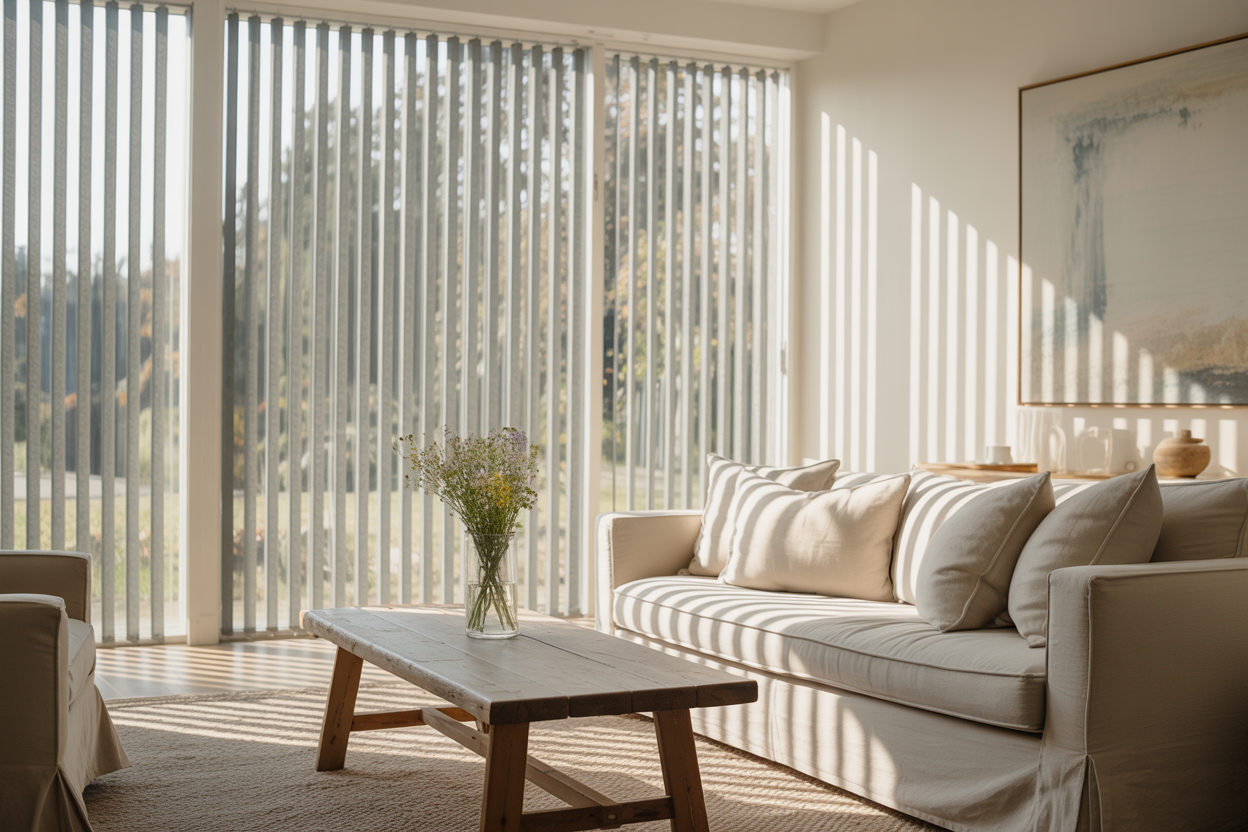
Metal vertical blinds create a symphony of irritation every time a breeze picks up. The slats clatter against each other like wind chimes designed by someone with a grudge against peaceful afternoons.
These relics from the 1980s office building aesthetic have overstayed their welcome in residential spaces. Vertical blinds are particularly susceptible to wind movement, making them a constant source of noise pollution in your home.
The metallic pinging and scraping sounds become especially pronounced during storms or when windows are open. Your guests will wonder if you’re running a small percussion ensemble in your living room.
Beyond the acoustic assault, these blinds offer all the visual warmth of a doctor’s office waiting room. The rigid vertical lines create harsh shadows that make spaces feel institutional rather than inviting.
Modern buyers expect window treatments that enhance comfort, not detract from it. While vertical blinds remain available in updated materials, the metal versions scream “1987 corporate rental” louder than any design statement you’re trying to make.
Consider softer alternatives like fabric panels or modern roller shades that won’t announce every weather change to your entire household.
8. Faux wood blinds that crack and peel after a season

Nothing screams “budget renovation” quite like faux wood blinds that start deteriorating before you’ve even gotten used to them. These synthetic alternatives promise the look of real wood at a fraction of the cost, but they often deliver disappointment instead.
Many homeowners experience warping after just one week of installation. The plastic materials simply can’t handle temperature fluctuations and humidity changes that real wood manages gracefully.
You’ll start noticing the telltale signs quickly. Slats begin to bow, edges crack, and that fake wood grain starts peeling away like sunburned skin. The effect is particularly embarrassing when potential buyers peer through your windows during showings.
Low-quality faux wood blinds made from PVC are especially prone to warping, cracking, and fading. Your investment becomes an eyesore faster than you can say “curb appeal.”
The irony is that buyers immediately recognize cheap faux wood blinds. They signal corner-cutting throughout your home, making visitors wonder what other shortcuts you’ve taken.
7. Dark, heavy drapes that make rooms feel like caves
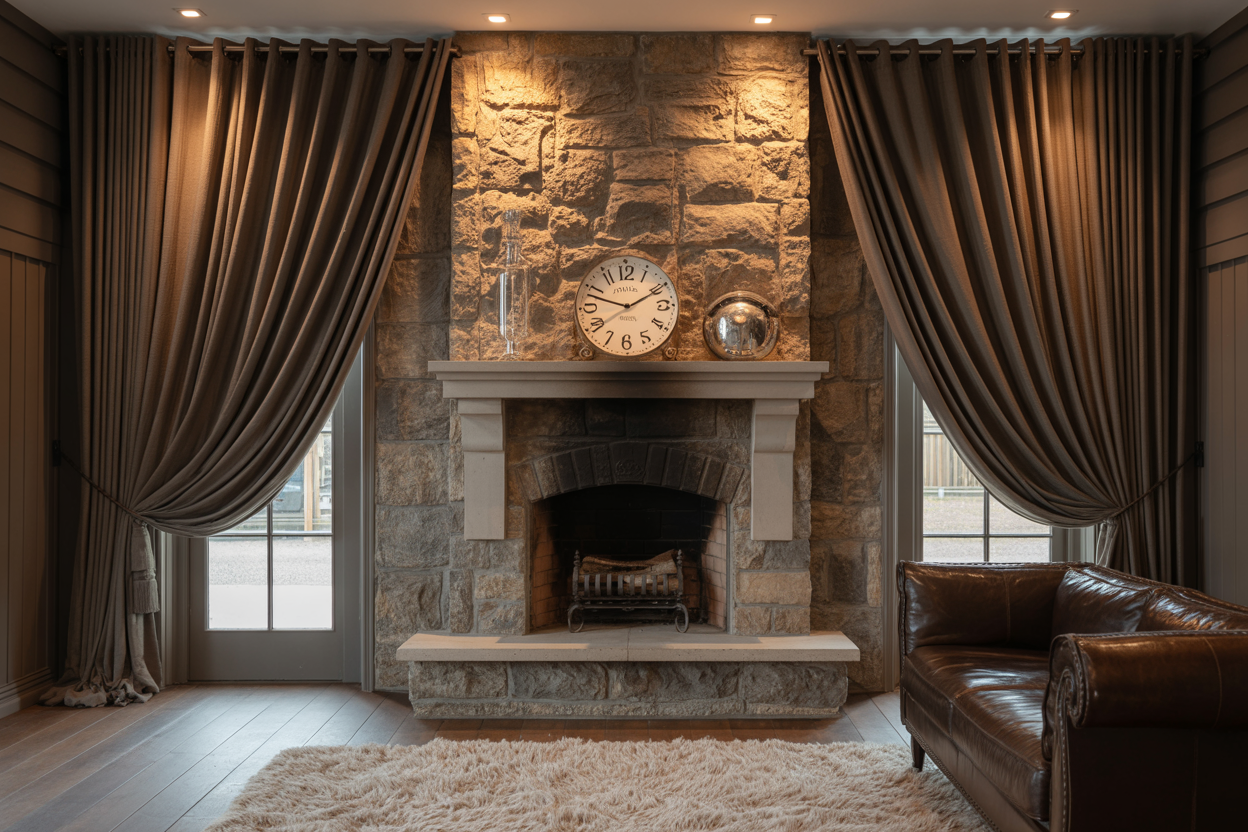
Your Victorian-era velvet curtains might have cost a fortune, but they’re doing your home no favors. These weighty window treatments block natural light and create an oppressive atmosphere that screams “haunted mansion chic.”
Heavy brocade drapes make spaces feel dark and confined while overwhelming modern decor schemes. Potential buyers walk into these dimly lit rooms and immediately feel claustrophobic.
The thick fabric and ornate patterns that once symbolized luxury now read as outdated and impractical. Your room loses its sense of airiness and flow when these fabric behemoths dominate the space.
Modern buyers expect bright, welcoming interiors that connect with the outdoors. When your windows are shrouded in heavy materials, you’re essentially telling natural light to take a hike.
Dark window coverings can work in intimate spaces like offices or nurseries, but they’re problematic in main living areas where buyers want to envision entertaining and daily life.
Consider swapping those cave-makers for lighter alternatives that still provide privacy without turning your home into a vampire’s lair. Your windows should invite light in, not barricade it out.
6. Fabric swag curtains that look like drapery overkill

Your grandmother’s elaborate swag curtains might have impressed dinner guests in 1985, but today’s buyers see them as dated window dressing that screams “too much effort.” These cascading fabric arrangements create visual clutter that makes rooms feel smaller and overly formal.
Modern swag curtains can work in contemporary spaces, but the traditional versions with excessive draping and ornate details read as outdated. When swag curtains make designs appear cluttered, they work against the clean lines that buyers expect.
The problem isn’t the swag concept itself—it’s the execution. Heavy fabrics with multiple layers and dramatic swoops create that “drapery overkill” effect that turns off potential buyers.
Your windows need breathing room, not a fabric sculpture. Designers are moving away from traditional drapery that dominates the room instead of complementing it.
If you love the swag look, choose simplified versions with clean lines and minimal layering. Skip the tassels, fringe, and elaborate tie-backs that make your windows look like they’re wearing a ball gown to a barbecue.
5. Sheer curtains with too much frill and zero function

Your grandmother’s ruffled sheer curtains might have been charming in 1985, but they’re now screaming “time warp” to potential buyers. These overly decorated window treatments prioritize frills over function.
Modern buyers expect window treatments that actually work. Sheer curtains should provide a minimalistic look while filtering light and offering some privacy. Your current frilly versions probably do neither effectively.
Those excessive ruffles, bows, and gathered fabric create visual clutter. They make rooms feel smaller and more dated than they actually are.
The problem isn’t sheer curtains themselves. Current window treatment trends for 2025 actually favor sheer fabrics for their airy, light-filtering qualities. The issue is when they’re drowning in unnecessary decorative elements.
Simple, clean-lined sheer panels work beautifully. They let in natural light while maintaining privacy and creating that coveted modern aesthetic buyers want. Save the frills for your personal spaces after the sale.
4. Overly ornate lace curtains that complicate cleaning

Your grandmother’s elaborate lace curtains might hold sentimental value, but they’re sending the wrong message to potential buyers. These fussy window treatments scream “high maintenance” louder than a toddler at bedtime.
Overly ornate designs can overwhelm the room and distract from other decor elements. Buyers take one look at those intricate patterns and immediately think about the hours they’ll spend trying to keep them clean.
Delicate lace requires hand washing or expensive dry cleaning. The elaborate details trap dust, pet hair, and cooking odors like a textile prison. Nobody wants to inherit a cleaning nightmare with their new home.
Heavy, overly ornate curtains can feel dated if not executed with intention. Today’s buyers prefer simple, functional window treatments that won’t dominate their weekends.
Instead, choose clean-lined panels in natural fabrics like linen or cotton. These materials are machine washable and complement modern interior design trends.
Simple white or neutral curtains allow natural light to filter through while maintaining privacy. Your buyers will appreciate window treatments that enhance the space rather than complicate their lives.
3. Venetian blinds with faded slats and jammed cords

Your once-pristine venetian blinds now look like they’ve been through a decade of neglect. Those faded, discolored slats scream “I haven’t updated anything since 2005.”
Jammed cords are the final nail in the coffin. Nothing says “maintenance nightmare” quite like blinds that refuse to cooperate when potential buyers try to adjust them.
Venetian blinds encounter various problems over time, from stuck slats and tangled cords to damaged or bent slats. These issues make your windows look tired and poorly maintained.
The good news? Replacing broken slats is possible if you’re handy with basic repairs. Remove the blinds, lay them flat, and access the lift cords through the bottom rail.
However, if your blinds are showing multiple signs of wear, replacement might be your best bet. Modern alternatives like cellular shades or updated blind styles will give your windows a fresh, contemporary look that buyers actually want to see.
2. Heavy valances – enough said lol.

Your grandmother’s heavy valances might have looked elegant in 1985, but today’s buyers want brightness and airiness. These fabric behemoths create the opposite effect.
Heavy valances eat up precious natural light that makes rooms feel larger and more welcoming. When you’re trying to sell your home, dark spaces work against you faster than a bad mortgage rate.
Heavy, light-blocking drapes and valances used to be trendy, but modern interior designers now prefer lighter, sheer options for windows. The shift reflects how buyers today prioritize open, bright spaces over formal window dressing.
Your chunky valances also make windows appear smaller than they actually are. This visual trick backfires when you’re showcasing your home’s best features to potential buyers.
Outdated valances with elaborate ruffles and fringe are making way for simpler, tailored cornices. These streamlined alternatives provide a polished look without overwhelming the window or blocking valuable daylight.
Consider swapping those light-blocking fabric monsters for something that actually enhances your windows instead of suffocating them.
1. Plastic mini-blinds that scream ’90s office chic’
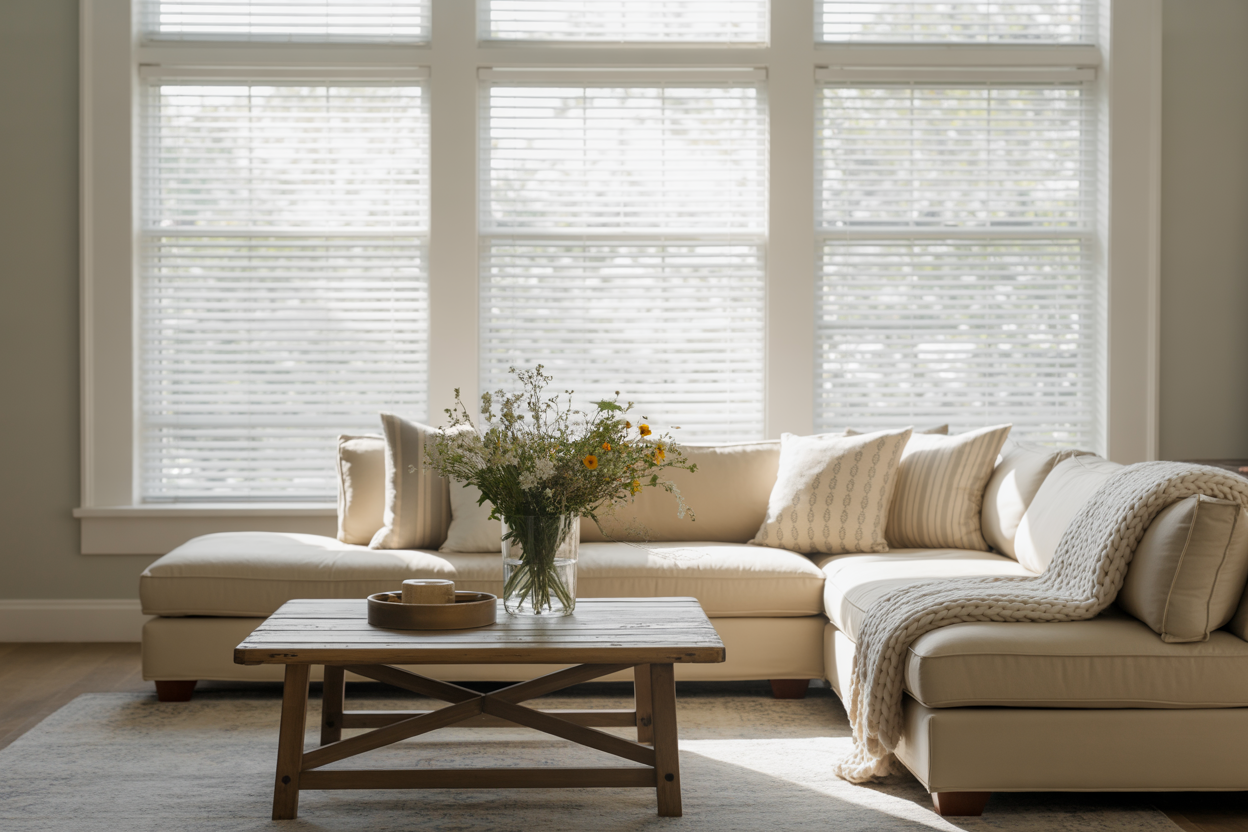
Nothing says “I haven’t updated my home since Clinton was president” quite like those ubiquitous plastic mini-blinds hanging in your windows. You know the ones – those stark white or beige strips that look like they were salvaged from a corporate cubicle farm.
These vinyl mini blinds were everywhere in the ’90s, and frankly, they should have stayed there. They collect dust like nobody’s business and turn yellow faster than your teeth after a coffee binge.
The thin slats cast harsh lines across your room, creating that distinctly institutional feel that makes visitors wonder if you’re running a DMV office from your living room. When potential buyers see these plastic mini blinds, they immediately start calculating replacement costs.
Your windows deserve better than these budget-friendly relics. While they might still function, they’re broadcasting that your design sensibilities peaked during the grunge era. Time to retire these workplace warriors and give your windows the upgrade they’ve been begging for.






